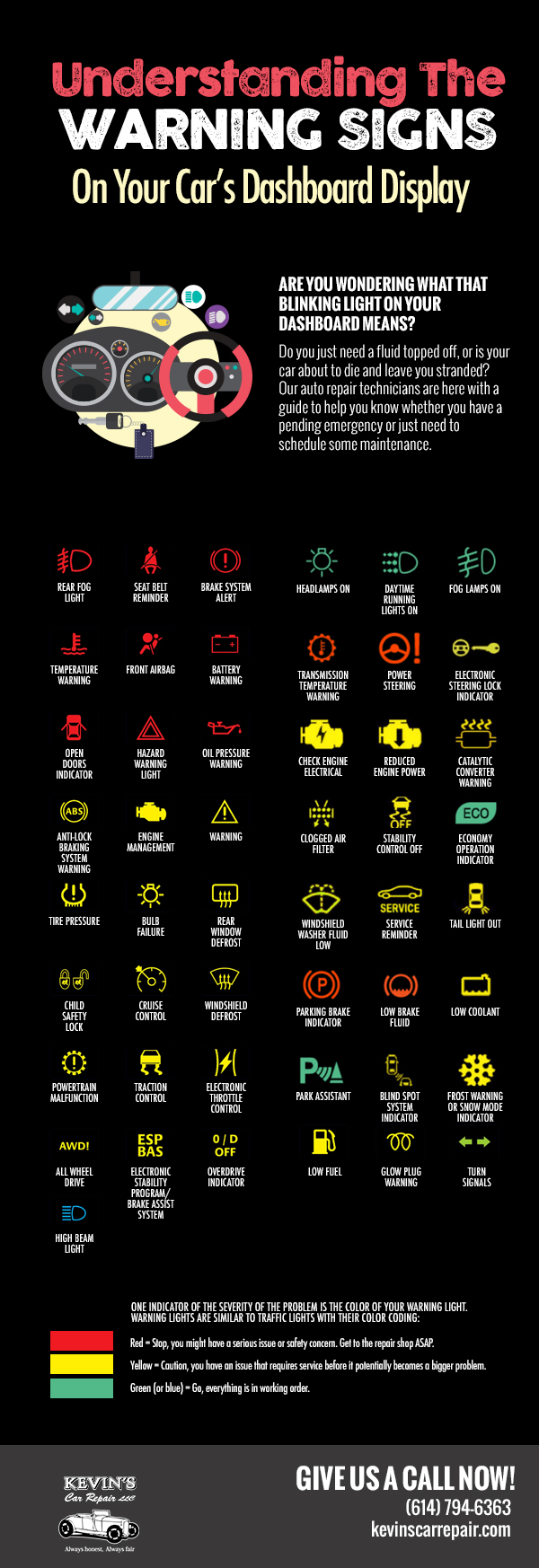Evaluating Your Auto'S Caution Indicators: What They Truly Communicate
Evaluating Your Auto'S Caution Indicators: What They Truly Communicate
Blog Article
Writer-Faulkner Kejser
When you're behind the wheel, those glowing caution lights on your dashboard can be a bit bewildering. Do car inside clean know what they're attempting to tell you concerning your vehicle's health and wellness? Understanding the relevance of these lights is crucial for your safety and security and the longevity of your lorry. So, the next time one of those lights appears, wouldn't you wish to decipher its message accurately and take the necessary actions to resolve it?
Common Caution Lights and Interpretations
Recognize typical caution lights in your automobile and understand their significances to make sure secure driving.
The most typical caution lights include the check engine light, which signals problems with the engine or discharges system. If this light begins, it's essential to have your lorry inspected immediately.
The oil pressure warning light shows low oil stress, calling for instant attention to stop engine damage.
A blinking battery light may suggest a malfunctioning charging system, possibly leaving you stranded otherwise attended to.
The tire pressure tracking system (TPMS) light alerts you to low tire pressure, influencing vehicle security and gas effectiveness. Disregarding this can cause dangerous driving problems.
cardetailnz suggests a problem with the anti-lock stopping system, jeopardizing your capacity to stop quickly in emergency situations.
Last but not least, the coolant temperature level advising light warns of engine getting too hot, which can result in severe damages if not dealt with quickly.
Comprehending source for this article will certainly help you attend to problems quickly and keep risk-free driving conditions.
Value of Prompt Focus
Comprehending the common caution lights in your car is just the very first step; the relevance of without delay dealing with these warnings can't be highlighted sufficient to ensure your safety when traveling.
When a caution light illuminates on your dashboard, it's your automobile's way of communicating a possible problem that requires interest. Disregarding these warnings can lead to more extreme troubles later on, compromising your safety and security and potentially costing you a lot more in repairs.
Trigger interest to warning lights can avoid break downs and crashes. For instance, a blinking check engine light might suggest a misfire that, if left ignored, might create damage to the catalytic converter. Resolving this immediately can conserve you from an expensive repair.
In https://www.traveldailynews.com/post/seven-car-maintenance-steps-that-lower-your-auto-repair-costs , a brake system warning light could signal low brake liquid or used brake pads, critical parts for your safety and security when driving.
Do It Yourself Troubleshooting Tips
If you discover a warning light on your dashboard, there are a couple of DIY troubleshooting pointers you can try prior to looking for professional aid.
The first step is to consult your automobile's manual to recognize what the specific caution light shows. Sometimes the issue can be as simple as a loose gas cap triggering the check engine light. Tightening the gas cap might settle the trouble.
An additional common issue is a reduced battery, which can cause numerous warning lights. Inspecting the battery links for corrosion and guaranteeing they're secure may repair the problem.
If a caution light persists, you can attempt resetting it by separating the automobile's battery for a few mins and then reconnecting it. Furthermore, inspecting your lorry's fluid degrees, such as oil, coolant, and brake fluid, can help fix warning lights connected to these systems.
Conclusion
In conclusion, understanding your cars and truck's caution lights is important for maintaining your automobile running efficiently and safely. By quickly dealing with these notifies and understanding what they mean, you can stay clear of expensive fixings and prospective malfunctions.
Keep in mind to consult your vehicle's manual for specific information on each alerting light and do something about it accordingly to guarantee a hassle-free driving experience.
Remain educated, remain risk-free on the road!
